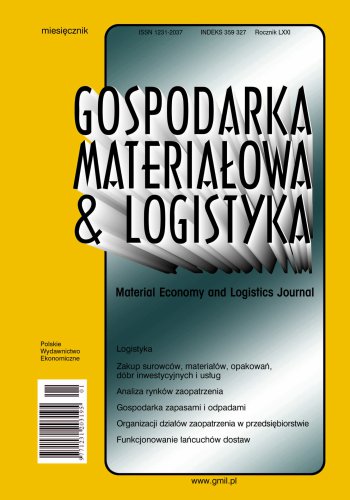Increasing resilience strategies for supply chains in tourism
As a result of pandemic COVID-19, the increasing resilience has become the priority for most global supply chains. Despite of many studies and analyses concerning the resilience of international supply chains in industry and trade after pandemic COVID-19, there is cognitive gap concerning resilience in touristic supply chains. Therefore the main aim of the paper is identification the structure as well as essence of touristic supply chains management concept. Based on the idea of touristic supply chain the expected utility of six major strategies to build greater resilience in industry and trade will be preliminary analysed from the tourism activity perspective. The methodology of the paper is mainly based on literature review, logical analysis as well as participant observation. Therefore the conclusions as a result of logical deduction should be additionally verified by further empirical research.
References
Bibliografia/References
Bąkowska-Morawska, U. (2014). Turystyczne łańcuchy dostaw. Kierunki zmian i doskonalenia. Prace Naukowe Uniwersytetu Ekonomicznego we Wrocławiu, (359), s. 13–18. https://doi.org/10.15611/pn.2014.359.01
Buhalis, D., & Laws, E. (red.) (2001). Tourism Distribution Channels: Practices, Issues and Transformations. Continuum International Publishing Group.
Gulsun, B., Yilmaz, O., Aslan, B. (2015). An Example Study of Tourism Logistics for Touristic Places in Turkey. The 2015 International Academic Research Conference, 12–15 April, Paris.
Hippold, S. (2020). 6 Strategies for a More Resilient Supply Chain. https://www.gartner.com/
Kusa, R. (2009). Analiza łańcucha dostaw produktu turystycznego. W: J. Pyka (red.), Konkurencja i kooperacja w strategiach zarządzania organizacjami. Towarzystwo Naukowe Organizacji i Kierownictwa. https://www.yumpu.com/xx/document/view/31870115/analizalancucha-dostaw-produktu-turystycznego
Landre, M., & Peeters P. (2011). Transport and Tourism: A Weak Symbiosis. An Introduction to the Special Issue. European Journal of Transport and Infrastructure Research, 11(3), 276–280. https://doi.org/10.18757/ejtir.2011.11.3.2932
Paliś, B., & Przenzak, K. (2022). Zachowania nabywców na międzynarodowym rynku turystyki zakupowej. Gospodarka Materiałowa & Logistyka, (2), 26–39. https://doi.org/10.33226/1231-2037.2022.2.3
Pawłowski, K. (2021). Zarządzanie pasażerskim transportem kolejowym w sytuacjach kryzysowych na przykładzie PKP Intercity w trakcie pandemii COVID-19. Gospodarka Materiałowa & Logistyka, (6), 36–44. https://doi.org/10.33226/1231-2037.2021.6.4
Sinclar, M. T., & Stabler, M. (1997). Economics of Tourism. Routledge.
Świtała, M. (2021). Wpływ pandemii COVID-19 na mobilność mieszkańców Warszawy. Gospodarka Materiałowa & Logistyka, (9), 19–31. https://doi.org/10.33226/1231-2037.2021.98.3
Witkowski, J. (2020). Dzieje logistyki od wsparcia przemocy do doskonalenia jakości życia. Wydawnictwo Uniwersytetu Ekonomicznego we Wrocławiu.
World Tourism Organization. (1975). Distribution Channels for Tourism. World Tourism Organization Report.
Zhang, X., Song, H., & Huang G. Q. (2009). Tourism supply chain management: A new research agenda. Tourism Management, 30. 345–358. http://dx.doi.org/10.1016/j.tourman.2008.12.010

